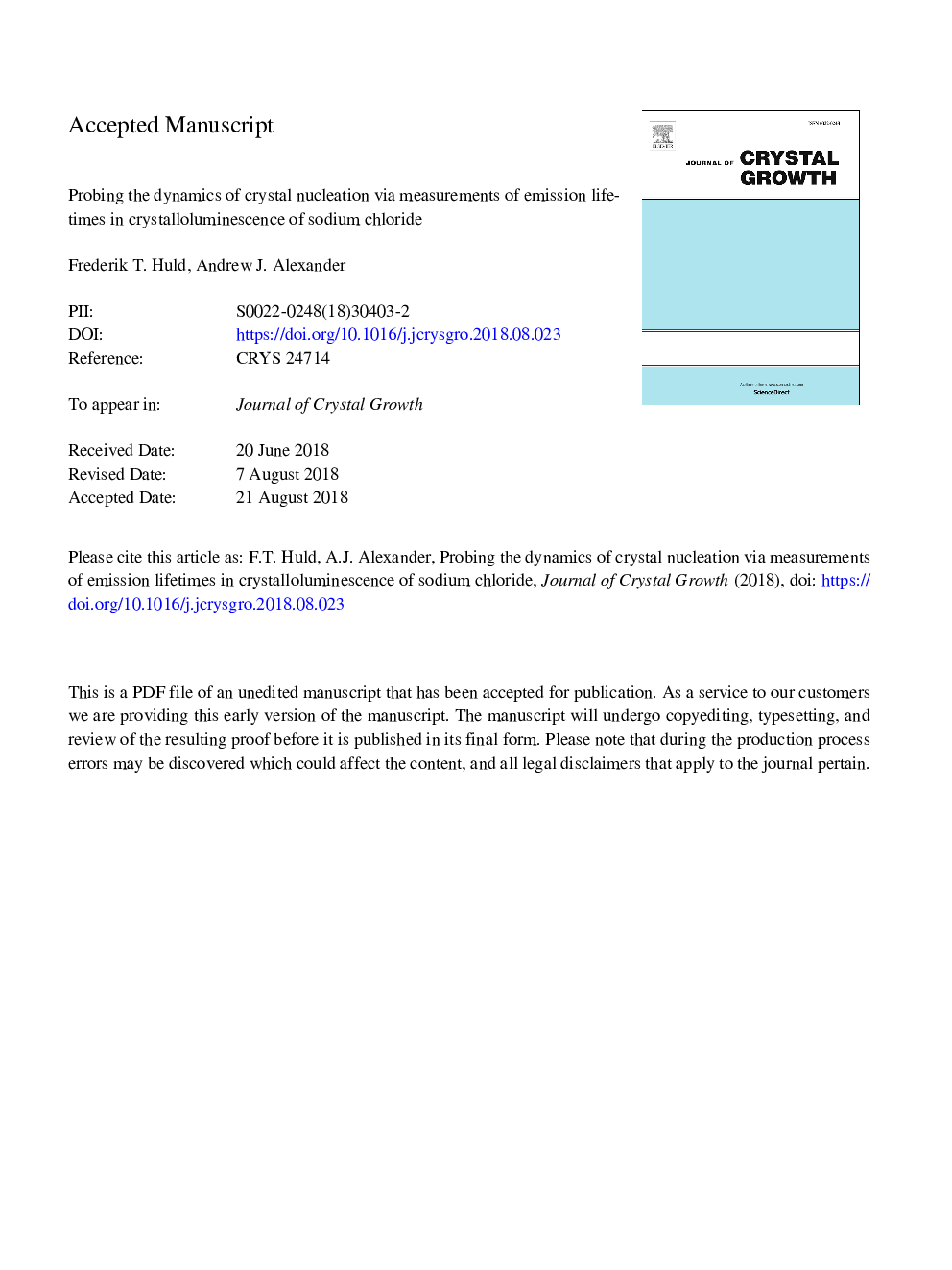| Article ID | Journal | Published Year | Pages | File Type |
|---|---|---|---|---|
| 8955813 | Journal of Crystal Growth | 2018 | 16 Pages |
Abstract
We report measurements of the time dependence of photoemission events in crystalloluminescence (XTL) of sodium chloride. Aqueous solutions of NaCl were intentionally doped with trace amounts of copper and silver ions, and crystallization was induced by mixing with HCl. The mean lifetime for solutions doped only with copper ions was 39.9â¯Â±â¯0.8â¯Î¼s, which is close to the ultraviolet photoluminescence lifetime of solid NaCl doped with Cu+. The rise time for emission events indicates that crystal nuclei are formed within 10â¯ns. A possible mechanism for reduction of Cu2+ to Cu+ during nucleation is discussed. The mean lifetime for solutions doped with a mixture of silver and copper ions was 12.7â¯Â±â¯0.7â¯Î¼s, which suggests that electronic energy transfer takes place between Ag+ and dimer (Ag+)2 species in the crystal lattice. Co-incident radiofrequency and acoustic signals were not detected, indicating that triboluminescence by crystal fracture is not a significant mechanism for XTL. The results demonstrate that dopant metal ions act as valuable indicators of the electronic environment during transformation of a solute cluster to a crystal nucleus.
Related Topics
Physical Sciences and Engineering
Physics and Astronomy
Condensed Matter Physics
Authors
Frederik T. Huld, Andrew J. Alexander,
